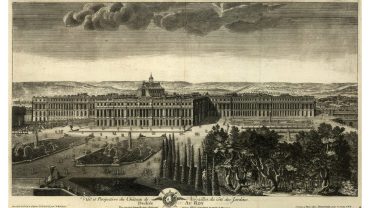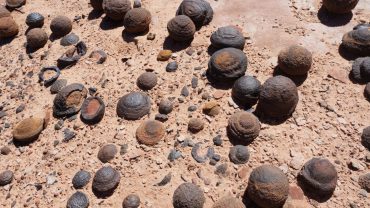The dense rainforests and winding rivers of the Congo Basin have long been a cradle of mystery and intrigue, with none more captivating than the legend of mokele-mbembe. This enigmatic creature, often described as the Congo River dinosaur, has captured the imagination for generations.
So just what is the creature that’s said to lurk in the unexplored swamps, dense rainforests, and complex caves of the Congo Basin, deep in the wild heart of Central Africa? Is it a living relic from the age of dinosaurs? Is it a cryptid, an animal whose existence is suggested but unproven, such as the Loveland Frog, the Beast of Gevaudan, or the Loch Ness Monster? Are the rumours of lost African dinosaurs real? Or simply a case of mistaken identity, folklore or legend?
Let’s take a trip into the 1.1 million square-mile Congo River Basin, the world’s second-biggest rainforest, in an attempt to shed light on the mystery of mokele-mbembe, the Congo River monster.
The History of Mokele-Mbembe

Are these the tracks of a lost dinosaur? (Credit: John White Photos via Getty Images)
Recorded stories of mythical creatures in or around the Congo region date back to at least the sixteenth century, rooted deeply in the oral traditions of the indigenous people of Central Africa. Accounts vary, but some state that the animal – if that’s what it is – hides in the river bends, will attack and demolish fishing boats, but will leave the men unharmed.
The earliest recorded reference to a Congo River ‘dinosaur’ in Western literature is attributed to the French missionary Abbé Lievain Bonaventure Proyart in 1776. He recounted local legends in his book History of Loango, Kakonga, and other Kingdoms in Africa, about a large, mysterious creature inhabiting the region which left huge tracks a metre wide on the jungle floor. However it wasn’t until the early twentieth century that the specific story of mokele-mbembe came to global attention as explorers and cryptozoologists began to take serious interest in the legend, spurred by reports and tantalising accounts from local guides.
In Lingala, a Bantu language spoken in parts of the region, mokele-mbembe can be loosely translated to ‘one who stops the flow of rivers’, though the exact translation is still debated.
What Does the Congo Dinosaur Look Like?

Does a sauropod lurk unseen in the Congo River Basin? (Credit: mjrodafotografia via Getty Images)
No-one is sure if mokele-mbembe exists, but if it did – or does – there are a number of descriptions that have worked their way into the public consciousness over the years.
According to legend, mokele-mbembe is a colossal beast resembling a quadrupedal (four-footed) sauropod dinosaur, featuring a long neck, smooth skin, bulky body, and with either one tooth or a single, rhinoceros-like horn, similar, perhaps, to a brontosaurus. Some have suggested it could be grey or brown, and may have a tail like that of an alligator or crocodile.
It’s said it has a penchant for submerging itself in the depths of remote rivers and swamps. Its supposed habitat spans the impenetrable forests and murky waters of the Congo River Basin, a region teeming with wildlife, yet often shrouded in mystery.
The Modern-Day Story of Mokele-Mbembe

Engraving of an early expedition of the Congo River (Credit: mikroman6 via Getty Images)
The modern tale of the lost African dinosaur started in 1909 in a book called Beasts and Men by Carl Hagenbeck who has been variously described as a showman, zoologist, animal dealer, big game hunter, and zoo supplier. Based on nothing more than rumour and hearsay, he said that he’d heard about a half-elephant, half-dragon creature living in what is now Zimbabwe. He wrote, ‘I am almost convinced that some such reptile must be still in existence. At great expense, therefore, I sent out an expedition to find the monster, but unfortunately they were compelled to return home without having proved anything, either one way or the other’.
Ludwig Freiherr von Stein zu Lausnitz
In 1913, German explorer Ludwig Freiherr von Stein zu Lausnitz was tasked with leading a German government-funded expedition into the Congo Basin and it was here where he became entwined with the legend of mokele-mbembe.
During his exploration, he encountered various reports and stories about the region’s wildlife. It was through these interactions that he first heard detailed accounts of the Congo River monster. It was described as a massive creature with physical characteristics similar to those of a sauropod. Intrigued by these descriptions and the consistency of the reports from different local sources, von Stein is believed to have meticulously documented these accounts, however, detailed records of his specific expeditions are somewhat ambiguous and often conflated with other explorers’ accounts.
While von Stein himself never claimed to have seen mokele-mbembe, his reports provided a significant impetus for subsequent expeditions and research into the legend, especially from Western-based scientists and explorers who were fascinated by the possibility of a living dinosaur. His writings helped to elevate the story from regional folklore to a subject of wider scientific and cryptozoological inquiry.
Later Expeditions
Over the years, there have been several expeditions into the remote rainforest to uncover the truth about the fabled Congo dinosaur. Perhaps the most well-known attempt was in 1981 when biologist Dr. Roy Mackal and a team of explorers interviewed people who claimed to have seen the creature first-hand. However, despite supposed eyewitnesses who attested to its existence, Mackal, like all the others, returned home without any concrete evidence of any kind.
A Congolese zoologist in the 1980s named Marcellin Agnagna claimed to have shot footage of the Congo River dinosaur but later reported the film didn’t develop properly. A book called Drums Along The Congo: On The Trail Of Mokele-Mbembe, The Last Living Dinosaur by American journalist Rory Nugent claimed to have included a photograph purportedly of mokele-mbembe, but his claims were considered inconclusive, and it was later argued by other commentators to be nothing more than a floating log.
The Elusive Trail of the Lost African Dinosaur

Artist impression of a bigfoot (Credit: David Wall via Getty Images)
Like almost all stories of cryptids or aliens like Bigfoot or the Kelly-Hopkinsville Encounter, the distinct lack of evidence in mokele-mbembe doesn’t always deter believers. Sceptics argue that the lack of physical evidence and the similarity of descriptions to existing animals like elephants, hippos or rhinos, cast doubt on the existence of mokele-mbembe as a unique species. However, the persistent stories and occasional reported encounters continue to fuel the mystery.
While some believe that the legend is a case of misidentification or folklore, others hold out hope for the discovery of something extraordinary. Whether a product of human imagination, an undiscovered species or genuine lost dinosaur, the legend of mokele-mbembe endures.












